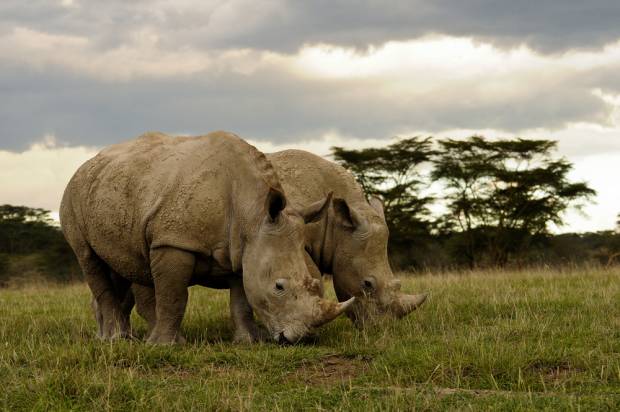These days everyone seems to be putting a price on a rhino. In South Africa, which has 25,000 remaining black and white rhinos, the “sale value of a single living rhino” is about 350,000 Rand, or a bit more than $29,000. This number comes from the Endangered Wildlife Trust, a South African environmental organization. South Africa lost a record 1,215 rhinos to poaching in 2014, so many that it is attempting to concentrate its remaining wild rhinos in an “intensive protection zone” in the southern part of Krueger National Park. The park is roughly the size of Israel, too big to effectively patrol.
For hunter Corey Knowlton, a rhino — or more specifically, the right to kill a rhino — is worth $350,000, the price he paid at auction for a permit to go to Namibia and shoot an older male black rhino, which he insisted was going to “die one way or another,” and that the money will be used to protect other rhinos, a question of intense controversy. Namibia, which has already lost 12 rhinos this year to poachers, is also relocating its rhinos to private farms which can better protect them.
For those with no interest in conservation, a rhino is worth more dead than alive. That’s certainly the case for the poachers and their ultimate customers, mainly in China and Vietnam, who pay as much as $30,000 a pound for the horn. This price is so alluring that there is a persistent debate over whether a regulated rhino horn market would eliminate the murderous black market or unleash pent up demand and make the situation worse. Rewarding the greed for bogus medical treatments with a legitimized market could unleash repressed demand and drive prices even higher, encouraging poachers even more.
And there is finally Sudan, the last living male northern white rhino, who is under 24/7 armed guard along with his two female companions, Fatu and Najin. With all three either aged or infirm, conservationists think only in vitro fertilization can now save the species from extinction. The Ol Pejeta Conservancy, a not-for-profit wildlife reserve in Kenya where the animals have lived since being relocated from a Czech zoo in 2009, is running a GoFundMe campaign to help pay for the guards. These underequipped park rangers must risk their lives against heavily armed poachers. After two months the campaign has raised £50,000 of its £75,000 ($112,000) goal.
What about the rhino benefits you can’t put a price on? A study last year in the Journal of Ecology identified the rhino as a keystone species, playing an essential role in maintaining the diversity and health of its environment. For 60 years there were no rhinos at all in Kruger National Park, but since their reintroduction in the 1960s they have dramatically changed its ecology for the better.
How do you value a rhino, or any other endangered species? Is it better to find their economic value to humans, and to increase the value of the living animal over the dead? Or should their value in the environment be enough? What value can we put on our own emotional connection with these animals? And finally, what do you feel is the best strategy for keeping these threatened animals alive?

